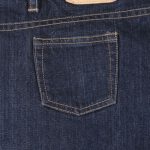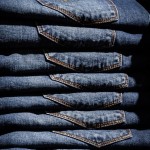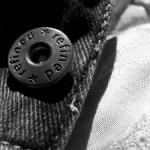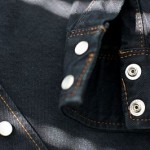Have you come across a pair of heavy denim jeans? If so, you might be wondering how they differ from traditional denim jeans. Based on their appearance alone, heavy denim jeans look the same as traditional denim jeans. They both feature a cotton-based denim construction, and they are both available in the sale cuts. With that said, heavy denim jeans feature a unique construction that offers several noteworthy benefits. To learn more about heavy denim jeans and why they’ve become so popular, keep reading.
Overview of Heavy Denim Jeans
Heavy denim jeans are exactly what they sound like: jeans made of heavyweight denim. The Heavy Hippo Blue jeans sold here at MakeYourOwnJeans, for example, are manufactured with 15 ounces of heavyweight denim. To put that number into perspective, other jeans are typically manufactured with just 12 ounces or less of denim.
The only real difference between heavy denim jeans and traditional denim jeans is their weight. Heavy denim jeans are made of thick and heavy denim, whereas traditional denim jeans are made of thinner and lighter denim. Aside from this subtle nuance, they are pretty much the same. However, there are both pros and cons associated with heavy denim jeans.
Advantages of Heavy Denim Jeans
Because heavy denim jeans are literally heavier than traditional denim jeans, they offer a superior level of strength and durability. You can wear them day after day for weeks or even months without worrying about the denim fabric degrading. Their heavy denim construction naturally protects them from damage.
Most people will agree that heavy denim jeans are warmer than traditional denim jeans, making them an excellent choice to wear during the winter months. When winter rolls around and you need a little extra protection against the cold weather, try wearing a pair of heavy denim jeans.
Here are a few key benefits of heavy denim jeans:
- Less likely to rip or tear
- Greater resistance to stains
- Warmer and more comfortable to wear during the winter
- Better physical protection
Disadvantages of Heavy Denim Jeans
On the other hand, heavy denim jeans may prove uncomfortable wear if they get wet. Assuming they are made of genuine denim, they’ll absorb a substantial amount of water. Of course, this shouldn’t be a problem for most people. As long as you keep your heavy denim jeans dry, they won’t weigh you down or otherwise cause discomfort when worn.
Some brands of heavy denim jeans also cost more than traditional denim jeans of the same brand. If you’re on a budget, you may want to avoid heavy denim jeans. — or, at least, purchase your heavy denim jeans from a store or brand with reasonable and affordable prices.

How to Choose Heavy Denim Jeans
If you’re tired of constantly replacing your jeans because of frayed threading or other forms of damage, you should consider purchasing a pair of heavy denim jeans. It’s a smart investment that will help you create a more stylish appearance. Furthermore, heavy denim jeans don’t degrade as quickly as traditional jeans, so you’ll probably more use out of them.
You can find heavy denim jeans available in over a dozen colors. Some even feature two or three colors rather than just a single color. If this is your first pair of heavy denim jeans, though, you should probably choose a basic color like indigo or light blue. You can’t go wrong with either of these two colors. For over a century, indigo and light blue have been the most popular colors for jeans. By choosing a pair of heavy denim jeans in either light blue or indigo, you can rest assured knowing that they’ll match most other clothes and accessories.
In addition to choosing the right color, choose an appropriate cut. Heavy denim jeans are available in many of the same cuts as traditional jeans, including boot cut, straight leg, skinny, loose, relaxed, low rise, high rise and more. So, which cut should you choose? Well, it depends on your personal preference as well as how you intend to wear them. If you’re planning to wear them with boots, for instance, you may want to choose boot-cut heavy denim jeans. But if you’re planning to wear with a button-up shirt, you may want to choose straight-leg heavy denim jeans.
How to Clean and Maintain Heavy Denim Jeans
Like all jeans, heavy denim jeans require regular cleaning and maintenance. Assuming they are made entirely of denim — not a combination of polyester and denim — you should be able to clean them in the washing machine. First, however, check the care tag. If it says “do not wash” or “hand wash only,” don’t place your heavy denim jeans in the washing machine.
Unless the care tag says otherwise, you can clean your heavy denim jeans in the washing machine. Just set your washing machine to cold and choose the gentle setting. When finished, either tumble dry on your heavy denim jeans in the clothes dryer or hang them on a line to dry.
Keep in mind, you can spot clean heavy denim jeans using warm water and soap. If you discover a stain on your heavy denim jeans, blot it with a damp washcloth and a little bit of soap. By blotting it rather than scrubbing it, the stain should come out.
Of course, you can learn more about cleaning and maintaining your heavy denim jeans by checking the care tag. Each pair of heavy denim jeans should have a care tag or label, which you can usually find inside the waistband.
In Conclusion
As explained here, heavy denim jeans are jeans made of heavyweight denim. They usually weight about 15 or 16 ounces as opposed 12 ounces. As a result, heavy denim jeans are usually stronger and more durable than traditional jeans.











